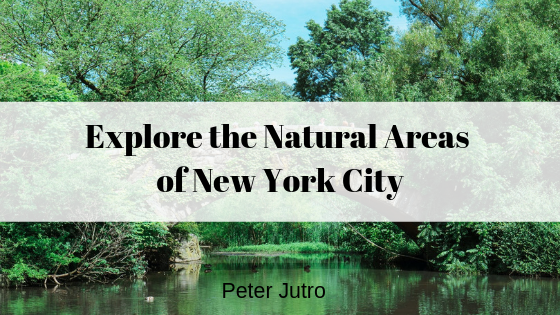When you think of New York City, you think of city life, skyscrapers, Broadway or the Statue of Liberty. If you asked someone about the city’s natural areas, you could get a puzzled look. Yet, if you ask someone about Central Park, then you receive a nodding head. For most, Central Park is a place to go for exercise, whether going for a run or kayaking on the lake. Many are unaware of the number of natural areas within Central Park or the number of natural areas in and around the city. In fact, there are natural areas in the five boroughs that make up New York City, including forests, wetlands, meadows, ponds, marshes, and ravines. Let’s take a look at the most significant natural areas.
- Central Park – For many, this 750-acre park is their only chance to experience a woodland. In 1858, Central Park (the Park) became America’s first landscaped public park. It’s home to over 230 species of birds and has eight “quiet” zones. What is surprising is the number of places you can go to experience ecosystems with hands-on activities led by the Park’s Conservancy educators. There a nearly 50 areas to explore! For example, the North Woods has the most secluded ravines and is perfect for birding. The Harlem Meer offers a variety of fish, waterfowl, and turtles. Also, the North Meadows Butterfly Gardens provide habitat for Monarch Butterflies and is home to two species of milkweed, which is a food source for Monarchs and caterpillars.
- Brooklyn Botanical Garden – Just like the Central Park, the New York legislature set aside acreage to protect green space from being swallowed up by concrete and steel. The park offered the very first children’s garden program, where children could grow their own vegetables and plants. It’s also home to the Japanese Hill-and-Pond Garden, the first public Japanese garden in the United States. In addition to numerous gardens, you’ll find conservatories that include the Desert Pavilion and the Aquatic House and Orchid Collection.
- Staten Island Greenbelt – This 2,800-acre greenbelt consists of public and private land located in central Staten Island – the largest park in New York City. The mission of this parkland is to promote and sustain it through education, research, and conservation. You’ll find a range of ecosystems from forests to wetlands with programs for each one. There’s also a recreation center, audio hiking tour, native plant center, and a carousel.
- Forest Park – Located in the Borough of Queens, it covers almost a square mile, with some 180 acres densely wooded. The park sits on a glacial moraine left behind when the last glaciers receded from the New York City area some 10,000 years ago. The noted landscape designer, Frederick Law Olmstead (also famous for the design of Central Park, the grounds of the U.S. Capitol, Stanford University, Mount Royal Park in Montréal, and many others) helped layout Forest Park. Within the park, one can find hiking trails, horse trails (stables are located just outside the park), a stunning winding roadway perfect for bicycling (that is closed to vehicles much of the time), and on one of its boundaries a historic carousel. The park is replete with resident bird life, and over 100 species of migratory birds can be found in the park at different times of year. Turtles, frogs, toads, butterflies, cicadas, raccoons and skunks abound as well. When in the park, it’s hard to believe that one is actually in New York City.
- Jamaica Bay Wildlife Refuge – An area of over 9,000 acres located in both Brooklyn and Queens, makes you forget that you are near any city, let alone actually in New York City. Easily reached by subway, it is part of the Gateway National Recreation Area and is the only wildlife refuge within the National Park System. This area offers extraordinary bird and other wildlife watching opportunities and the ability to experience sand dunes, salt marshes, and woodlands. A visitor center is located in Broad Channel, a small maritime community in Jamaica Bay, from which you can take guided tours or go hiking. Boat rental is available at many points around the bay.

